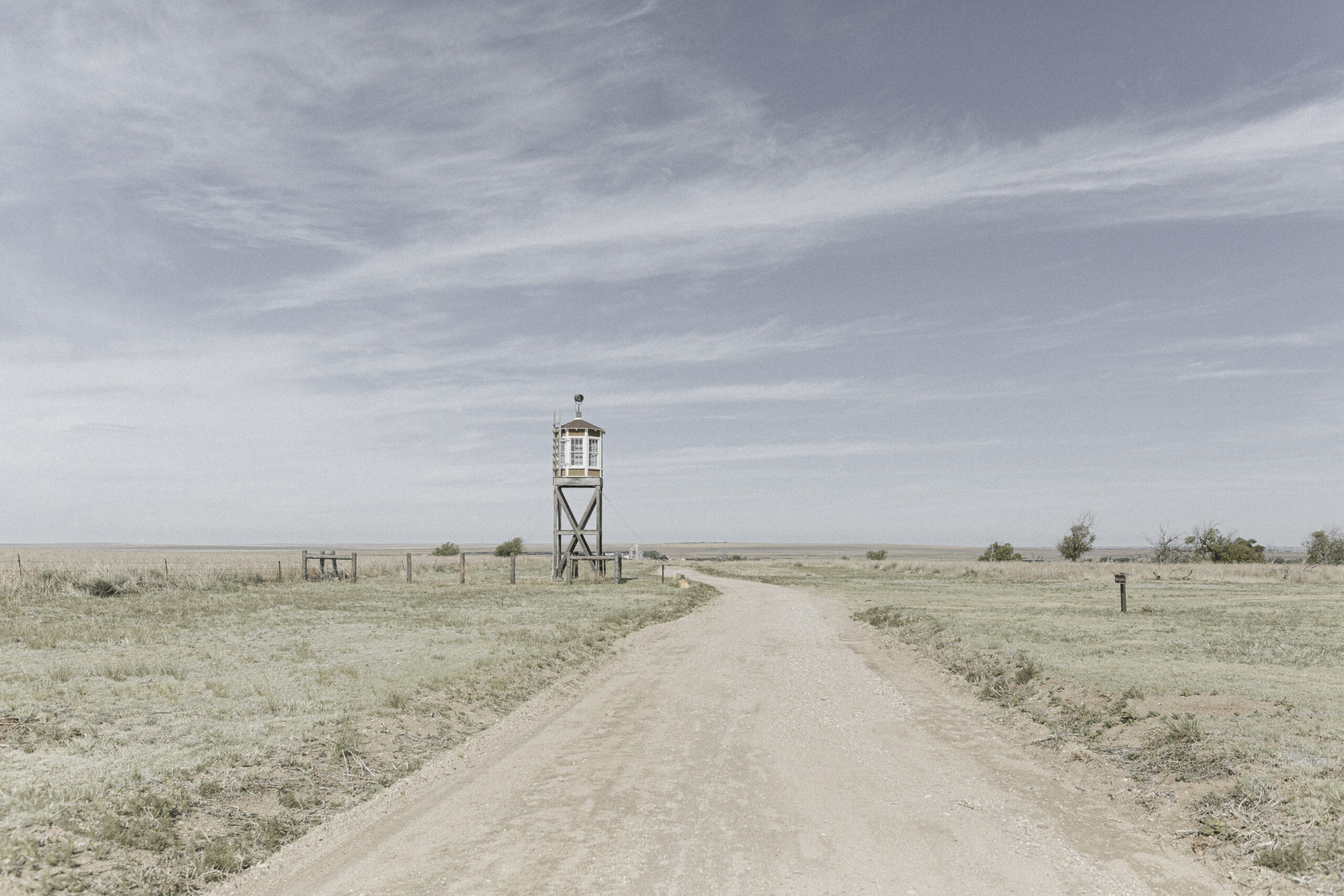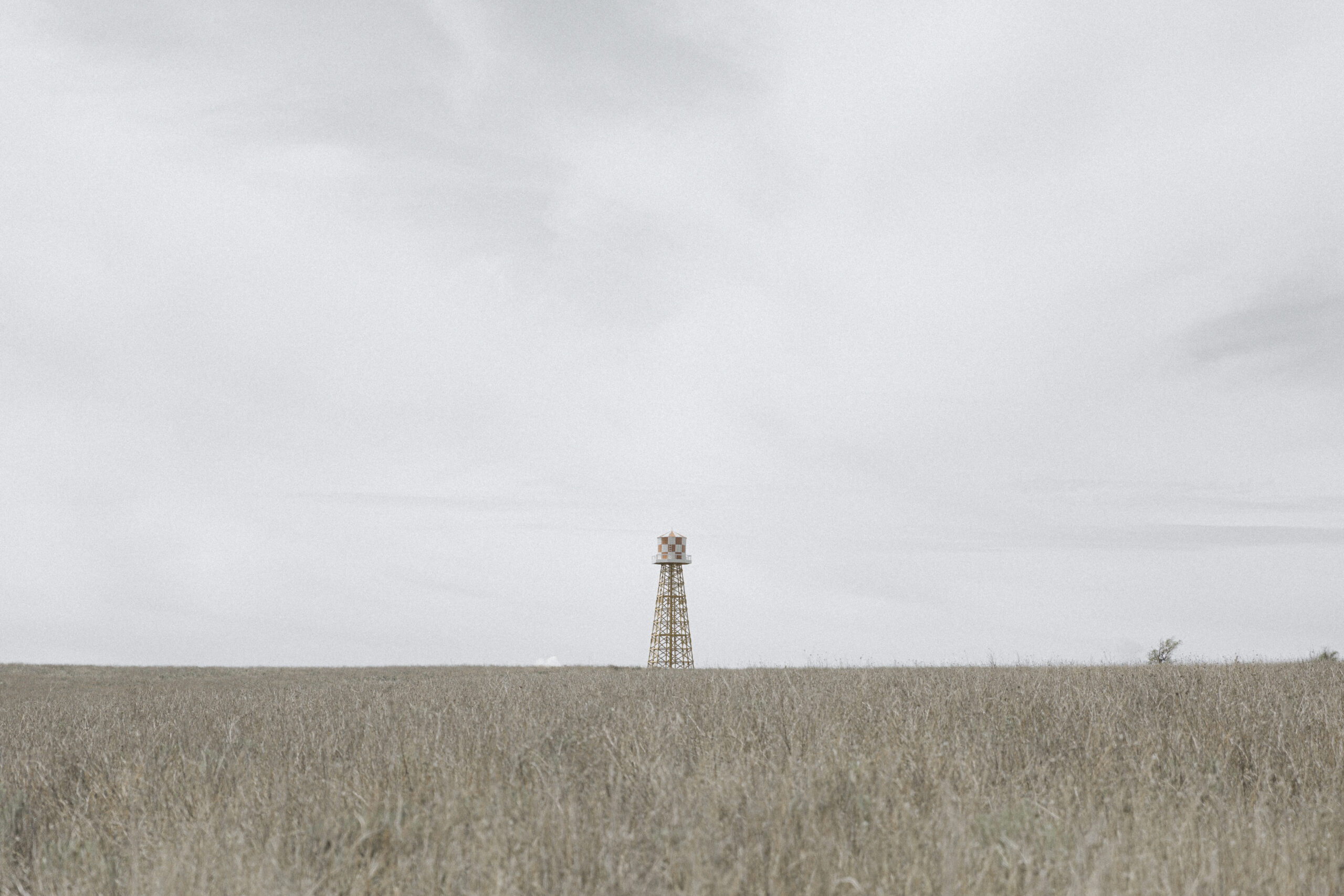
Nestled in the High Plains of southeastern Colorado, the Granada War Relocation Center, more commonly known as Amache, was the smallest of the ten War Relocation Authority concentration camps. The camp’s name derives from Ameohtse’e, the daughter of O’kenehe, a Cheyenne chief who was killed during the Sand Creek Massacre. To minimize postal confusion between Granada—the nearby town—and the Granada Relocation Center, the name Amache became more widely used.
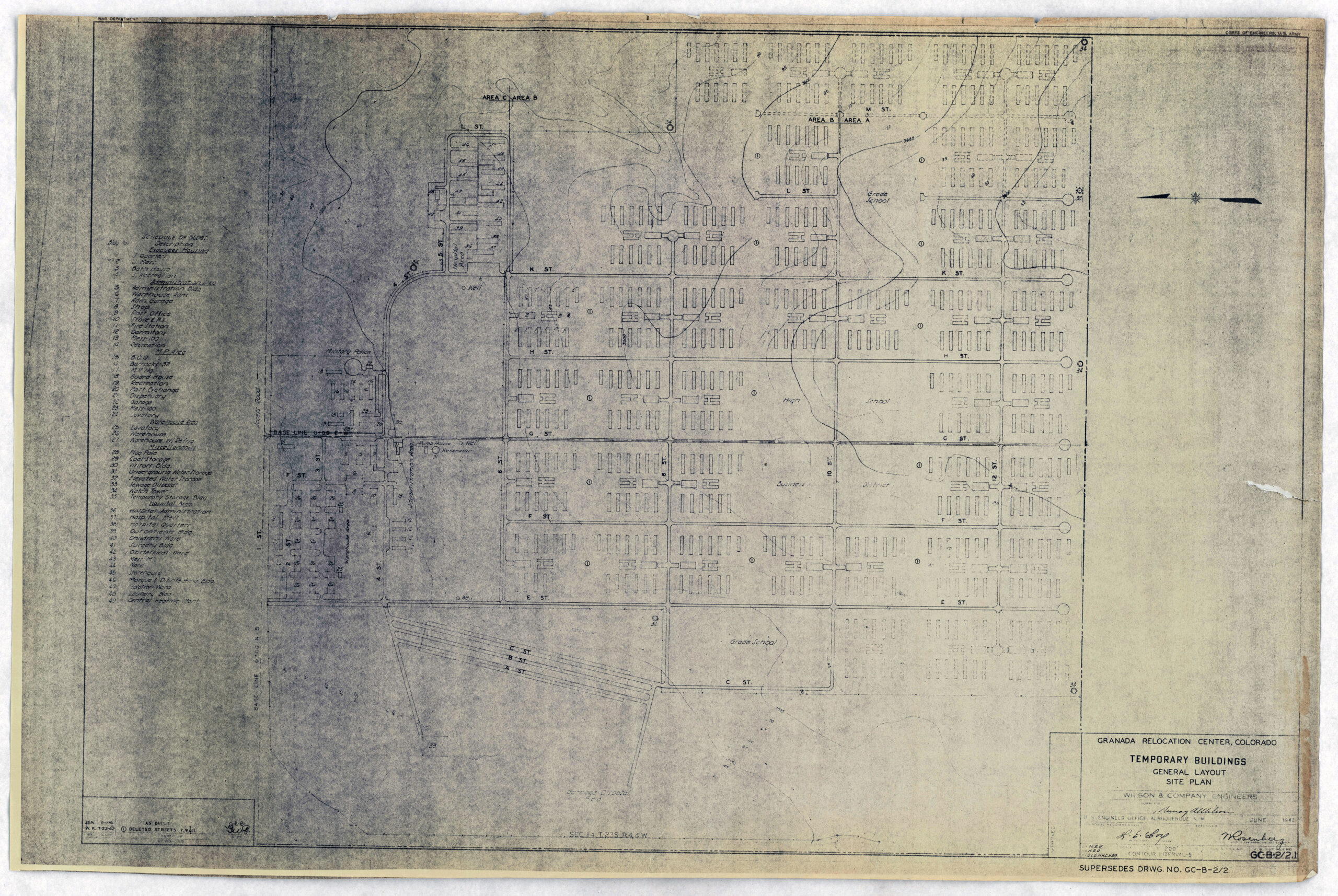
The War Relocation Authority‘s master plot plan for Amache. Courtesy of the National Archives and Records Administration.
Amache spanned 10,500 acres of semi-arid prairie between the Rocky Mountains and the Great Plains. The climate was extreme—scorching summers brought frequent dust storms, thunderstorms, and even tornadoes, while frigid winters often blanketed the camp in snow.
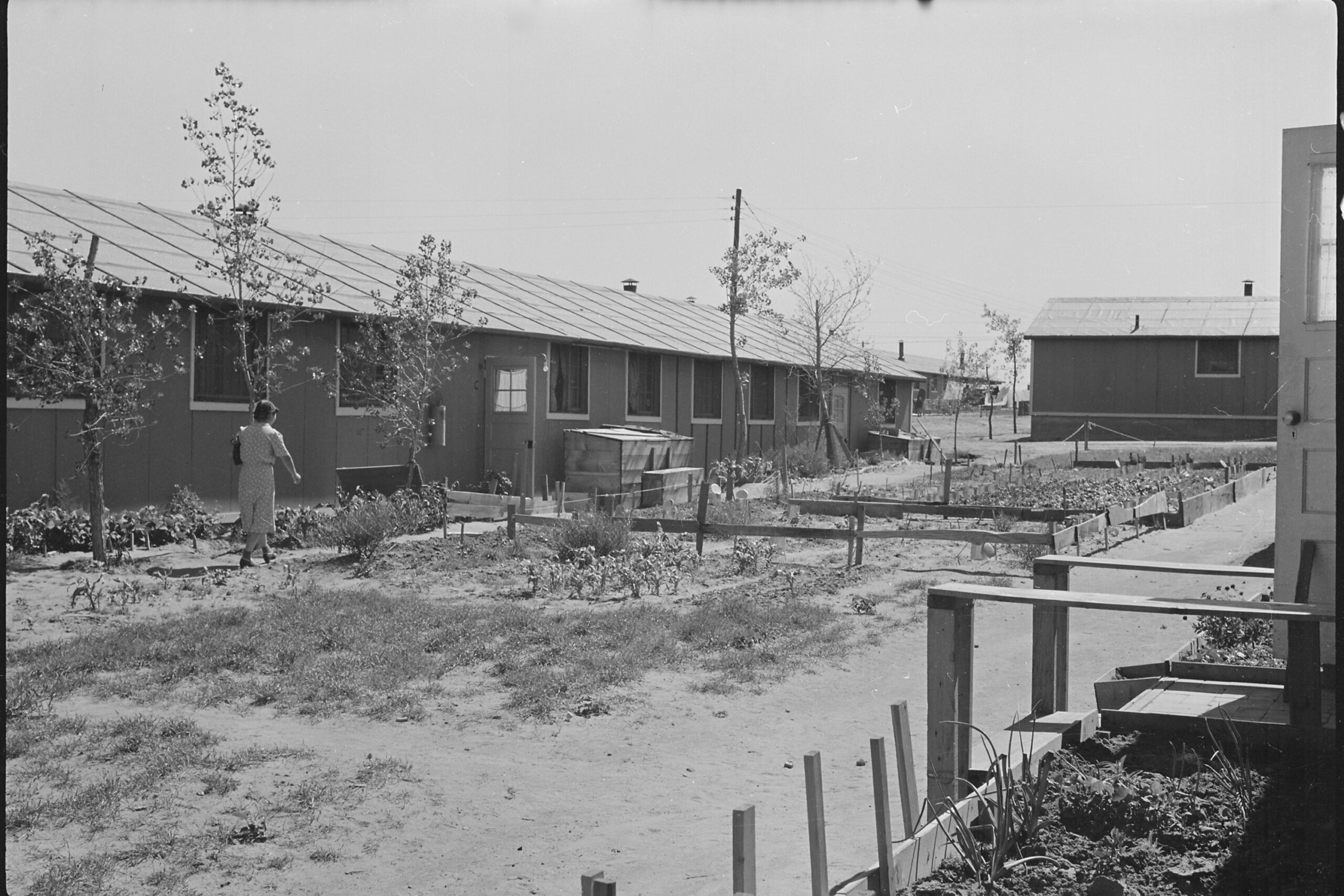
Incarcerees planted trees and communal gardens around their barracks to restore a sense of normalcy while detained in camp. June 20, 1943. Courtesy of the National Archives and Records Administration.
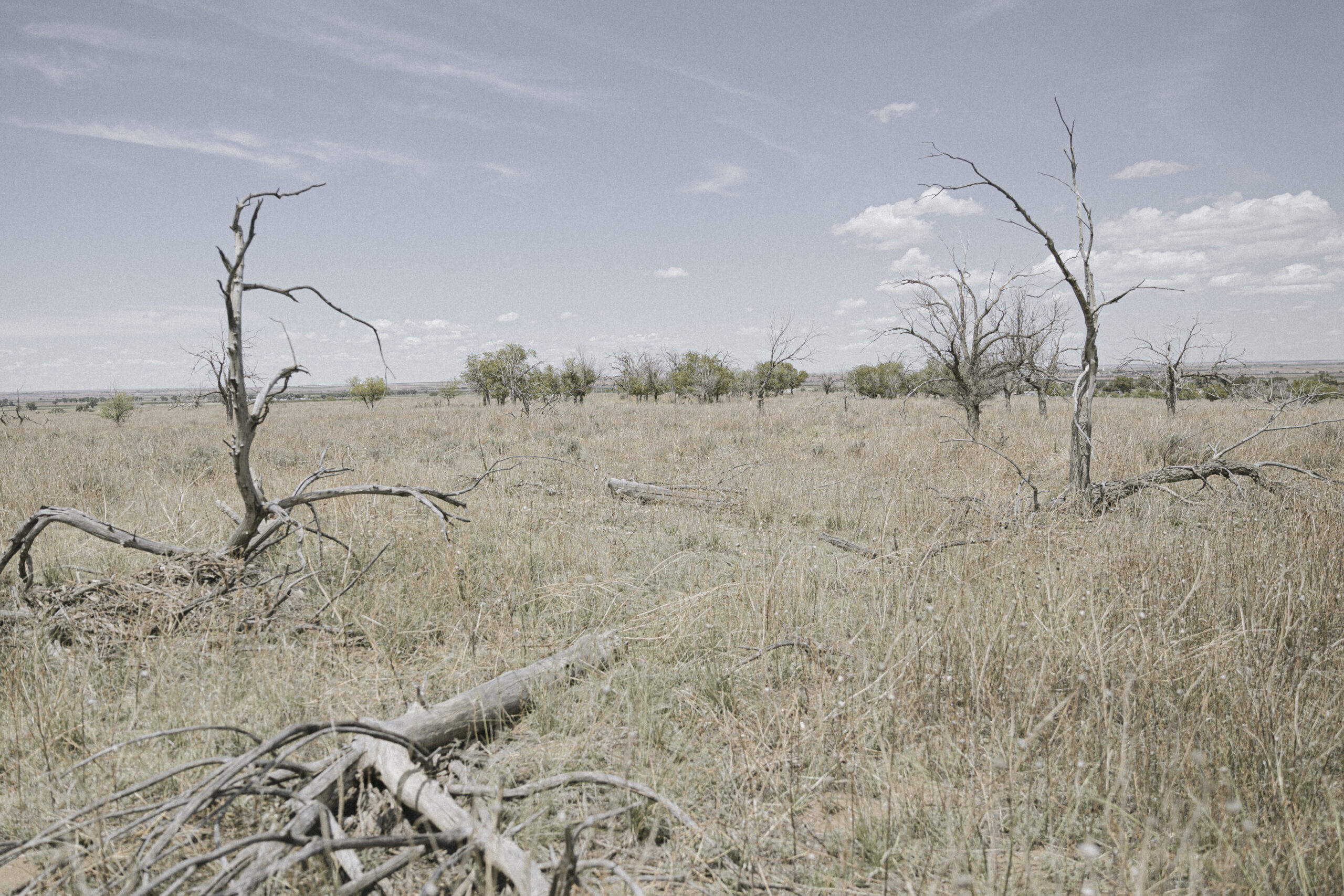
Building foundations, garden features and trees planted by incarcerees remain at the site today. June 24, 2024.
The first incarcerees arrived in 1942, many of them from California’s Central Valley, Northern Coast, and Southwest Los Angeles. Many had agricultural experience, which they used to beautify the barren landscape by planting gardens, constructing decorative entryways around barracks, and lining pathways with cottonwood and Siberian elm trees to create much-needed shade.
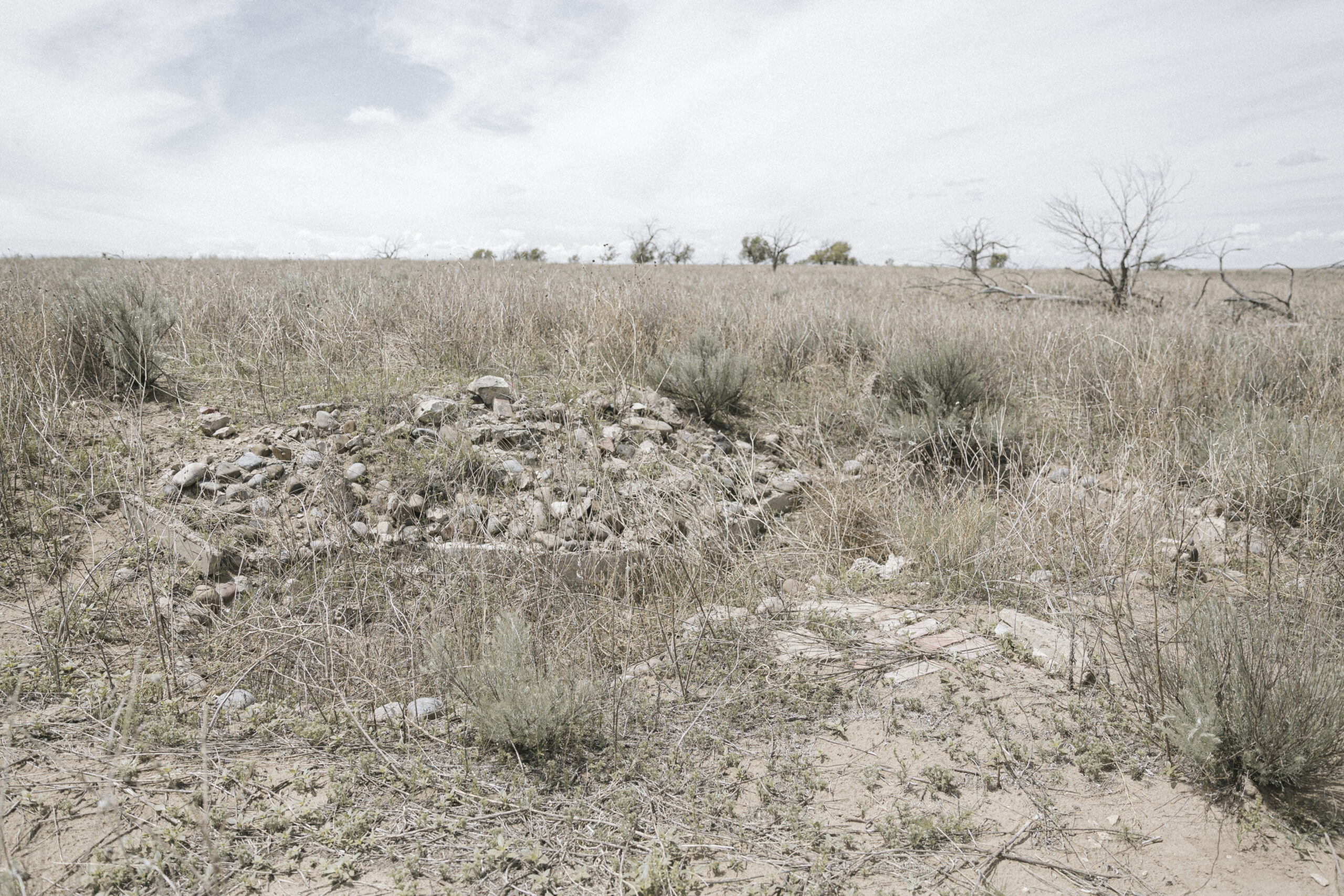
Some communal gardens—like this koi pond—incorporated traditional Japanese elements, like asymmetrical shapes, natural materials and shakkei, or “borrowed scenery” from the surrounding area.
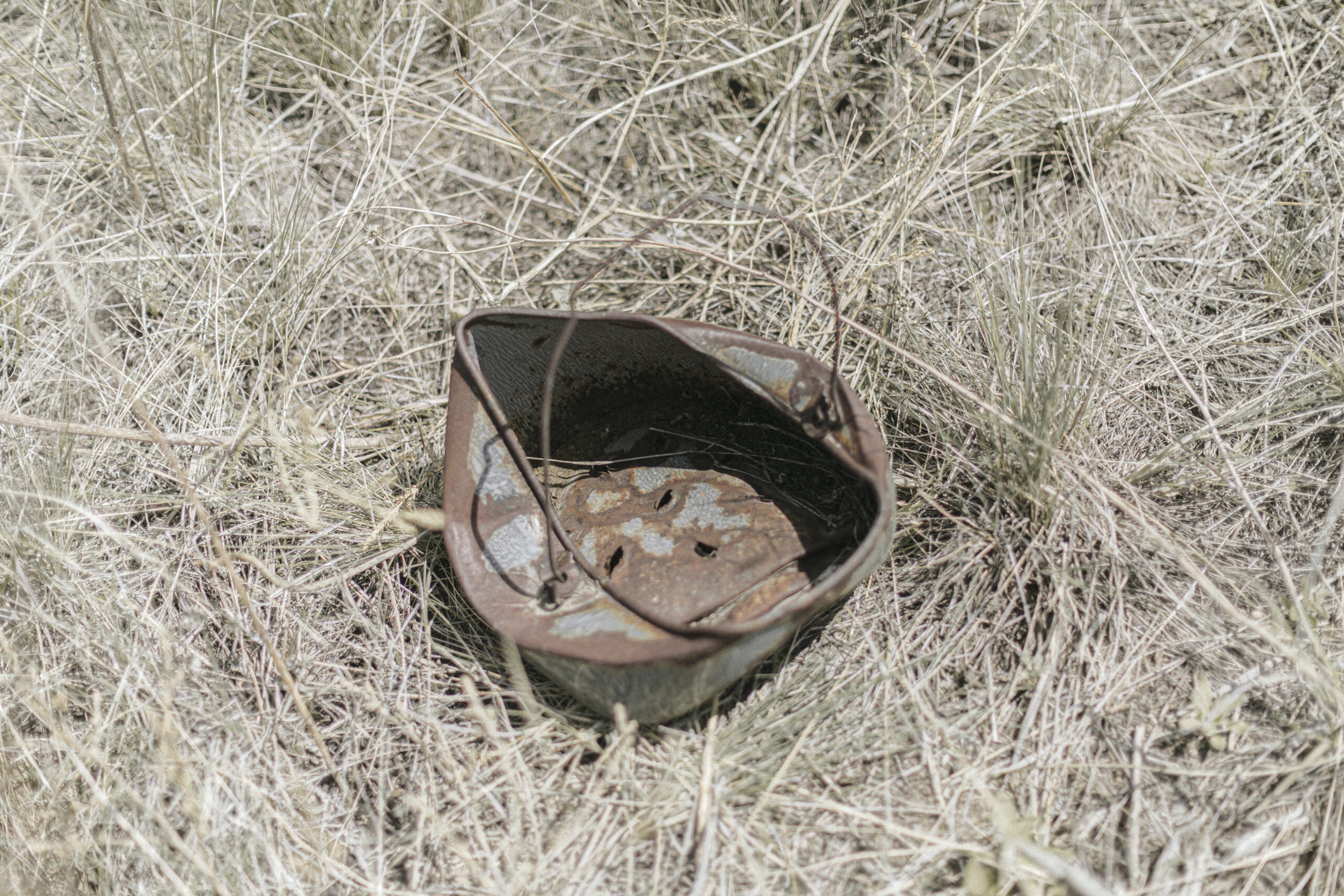
A metal planter, likely handmade by an incarceree. Thanks to local researchers’ “catch-and-release” archaeological methodology, many camp artifacts like ceramics, cookware and gardening tools—even marbles that children used to play with—remain at the site today.
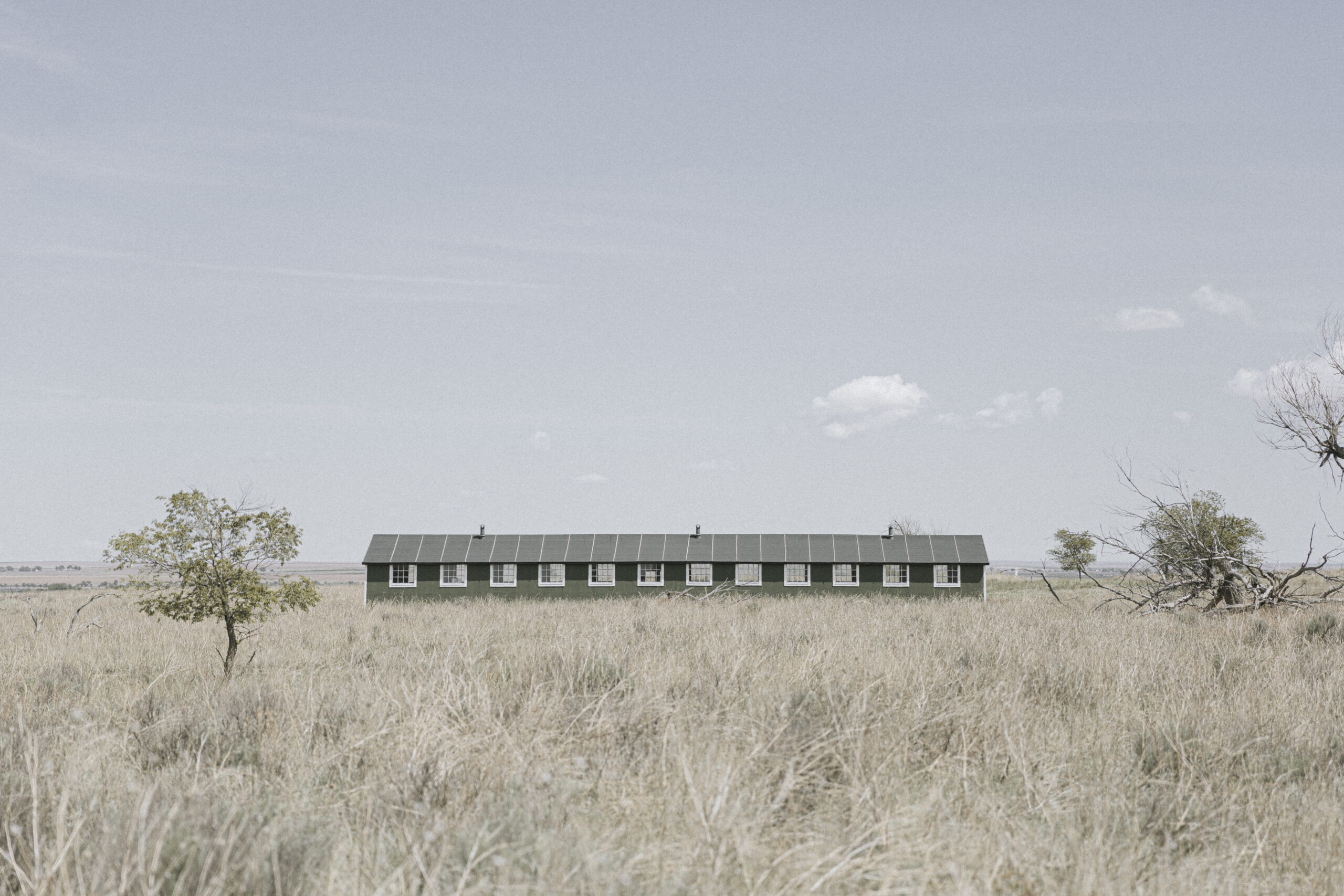
An original recreational hall, which was removed from the site in 1946 to serve as a utility building, was returned to Amache in 2018.
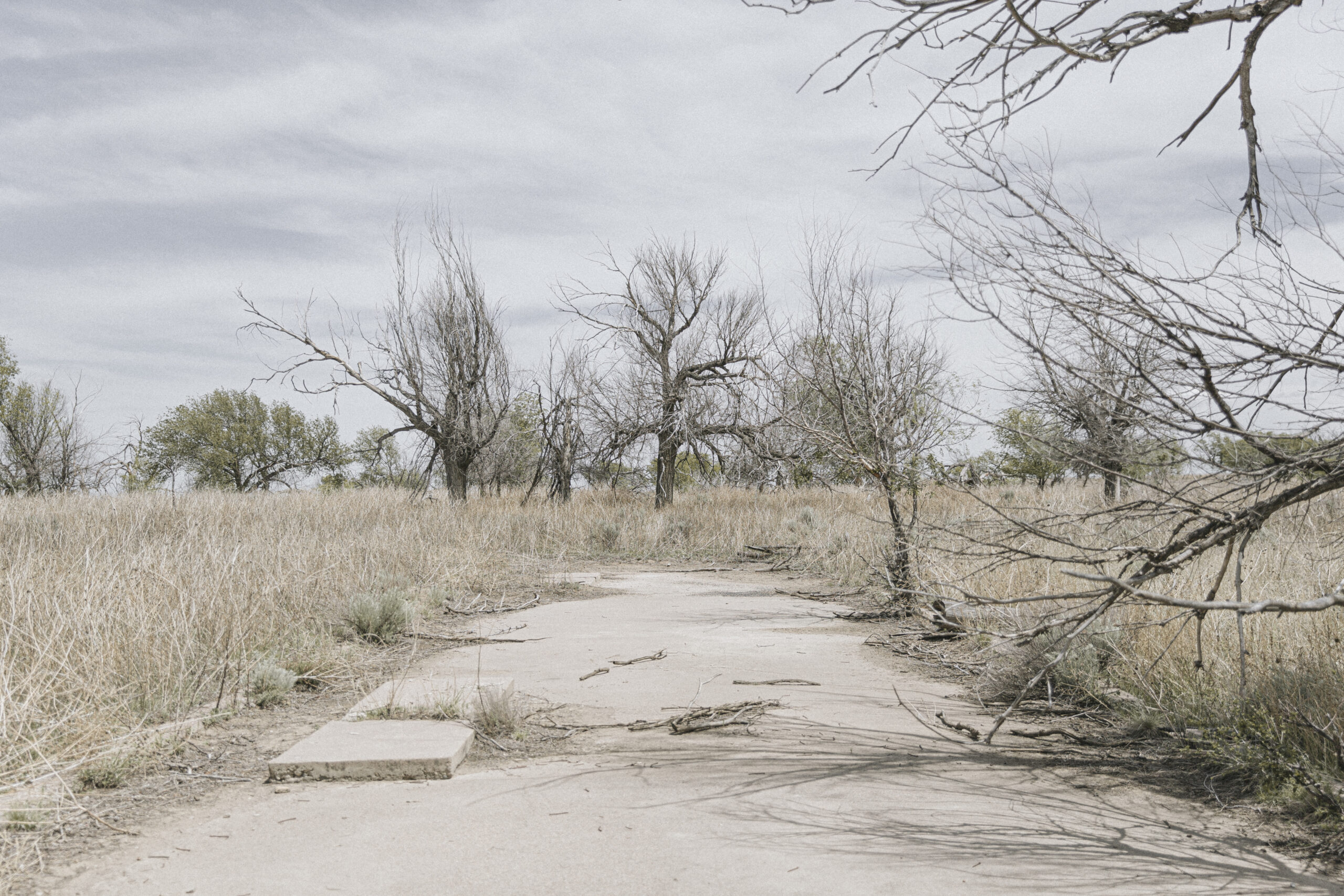
Concrete foundations show that most of the barracks were 120′ x 20′ buildings divided into six apartment units. Each apartment was equipped with a coal-burning stove, as interpreted by the elevated square platform.
Unlike many other camps, Amache was built on private land, rather than federal land, leading to tensions between the War Relocation Authority and local landowners. Much of the land was seized through condemnation, causing resentment among residents who had already struggled through the Dust Bowl and Great Depression.
These tensions escalated when the War Relocation Authority funded the construction of Amache High School, which was met with opposition from some local residents. Given that the town of Granada had seen little new development in decades, many resented the idea of federal funds being allocated toward a school exclusively for Japanese American students. While the high school was ultimately completed, plans for elementary and middle school buildings were abandoned due to continued local resistance.
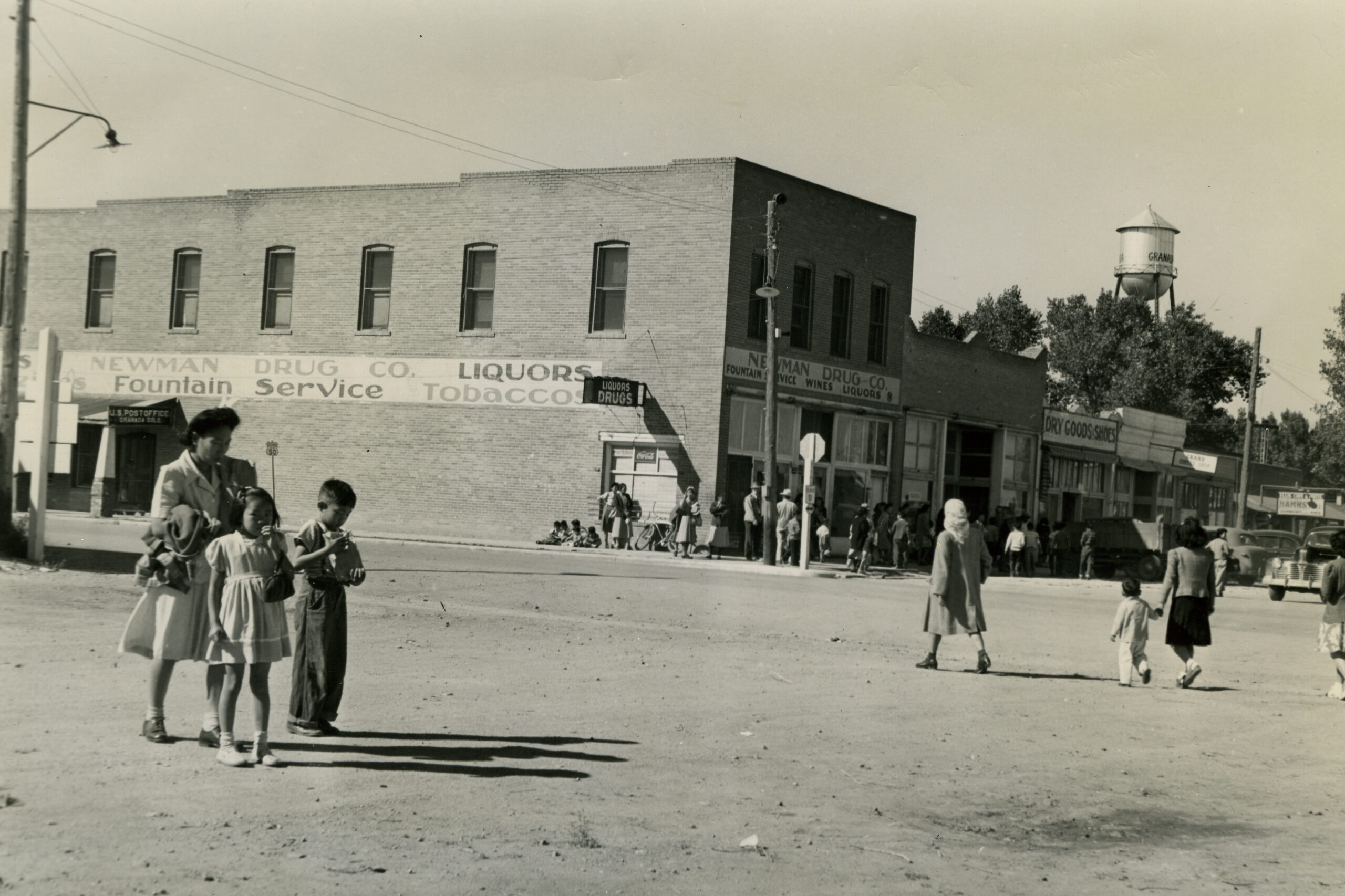
Newman’s Drug Store in the nearby town of Granada, circa 1942-1945. Source: ddr-densho-159-9, Courtesy of the Densho Digital Repository, George Ochikubo Collection
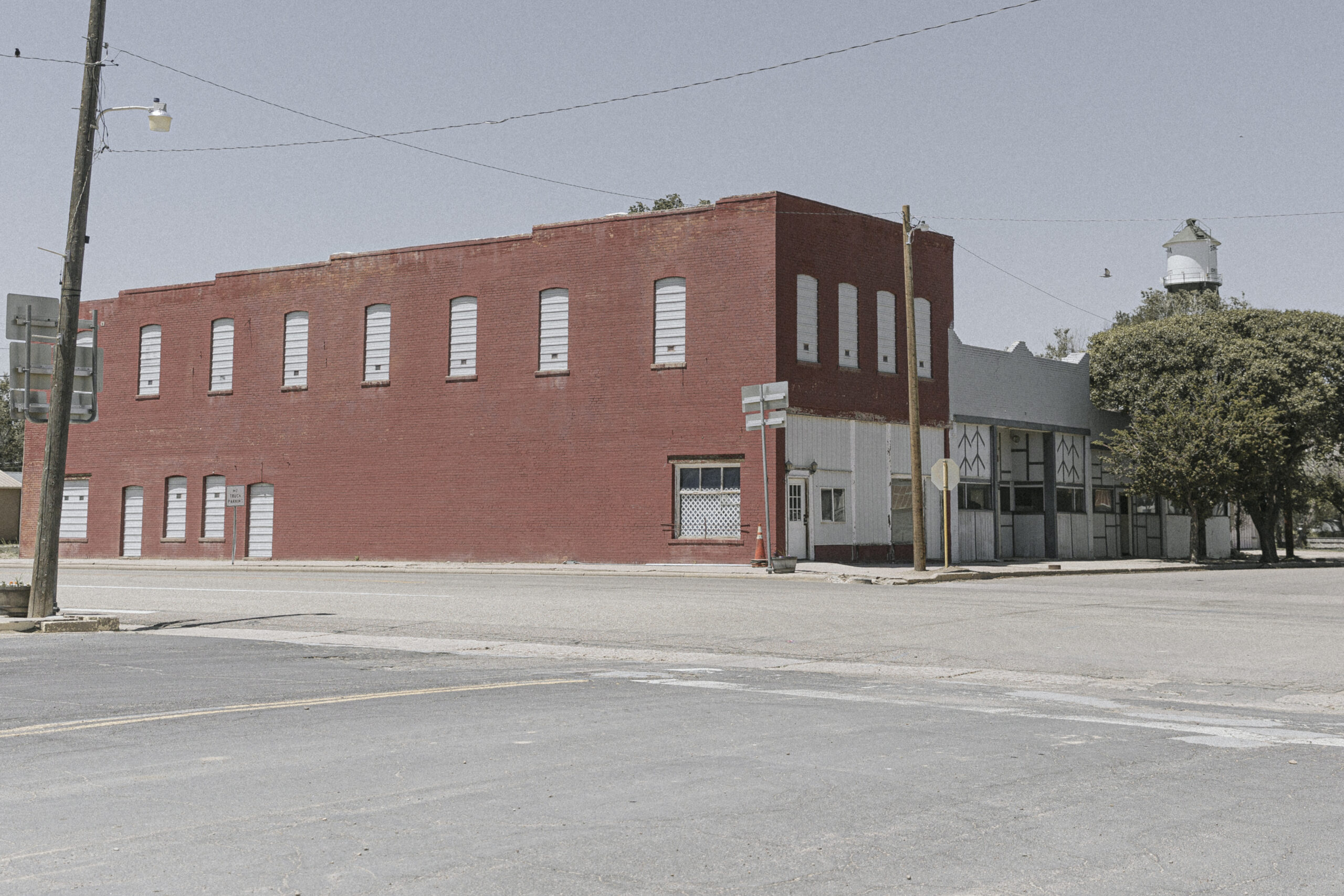
Newman’s Drug Store in the nearby town of Granada. June 24, 2024.
One of the most distinct aspects of Amache was its proximity to the town of Granada, making it one of the few camps where incarcerees had limited access to outside businesses. Some Japanese Americans took advantage of the short walking distance to shop at local stores or visit soda fountains, a rare privilege compared to other War Relocation Authority camps.
Initially, anti-Japanese sentiment was strong, with some local businesses refusing to serve incarcerees. However, as business owners recognized the economic benefits of catering to a large customer base, attitudes began to shift. Edward Newman, a Granada merchant, rented a large building and stocked items specifically for incarcerees, including Japanese sake and specialty foods. He even hired incarcerees as store clerks and a nanny. By 1945, advertisements from Granada businesses filled the Amache High School yearbook, reflecting a change in community relations.
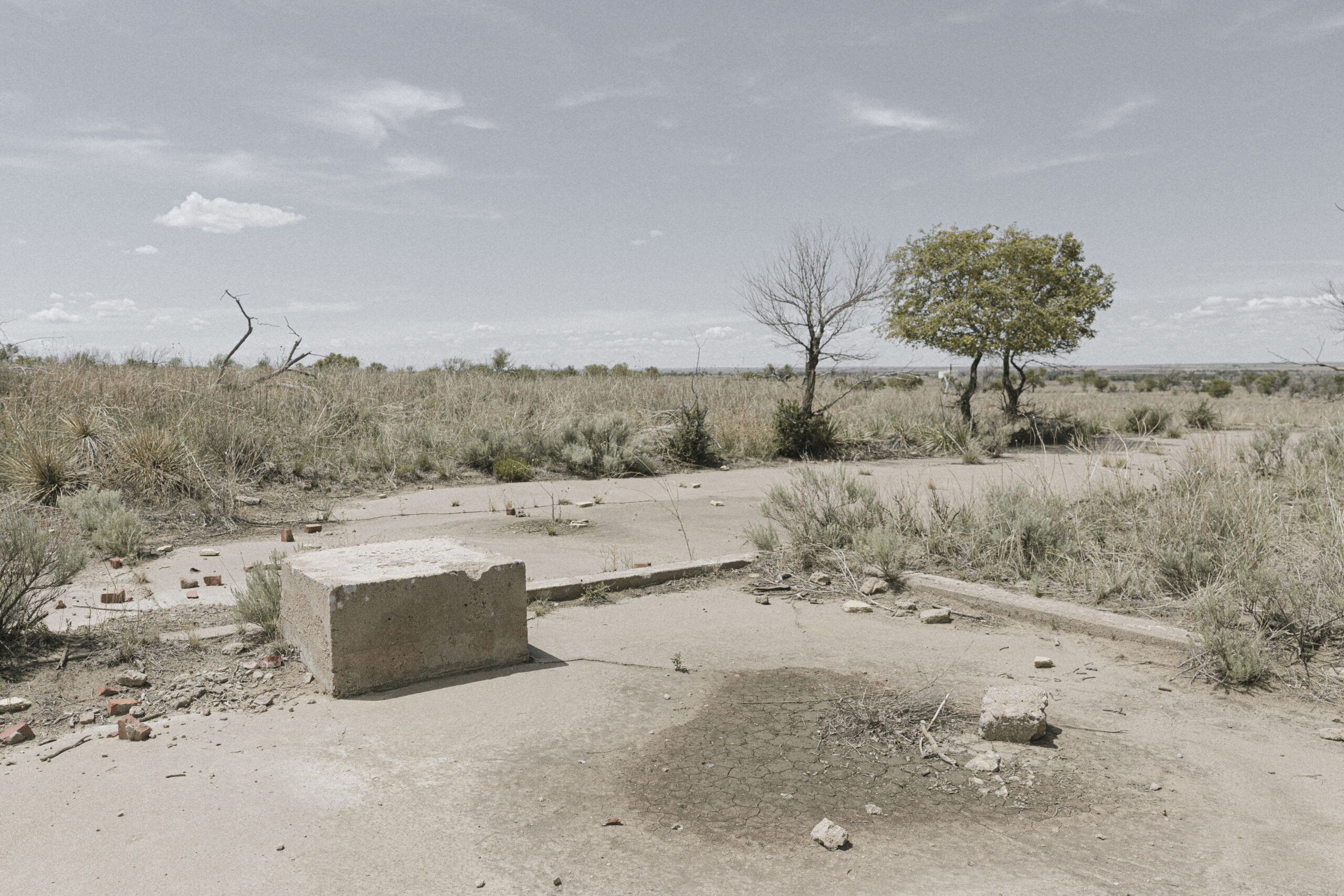
There were 29 residential “blocks” at Amache. Each block consisted of 12 barracks, a mess hall, a public laundry, a recreation hall, and a communal bath house, as pictured here.

What remains of the Amache Cooperative Enterprise, an incarceree-led community cooperative that once included a shoe repair shop, beauty parlor, optometry shop, and clothing store among other businesses. Even non-Japanese locals shopped for goods and services at the cooperative.
When the controversial loyalty questionnaire was distributed in 1943, Amache recorded the lowest number of incarcerees answering “no” to Question 28. After segregation hearings, 125 incarcerees were transferred to Tule Lake, while nearly 1,000 incarcerees from Tule Lake were sent to Amache. In total, only 35 Amache incarcerees were deported to Japan.
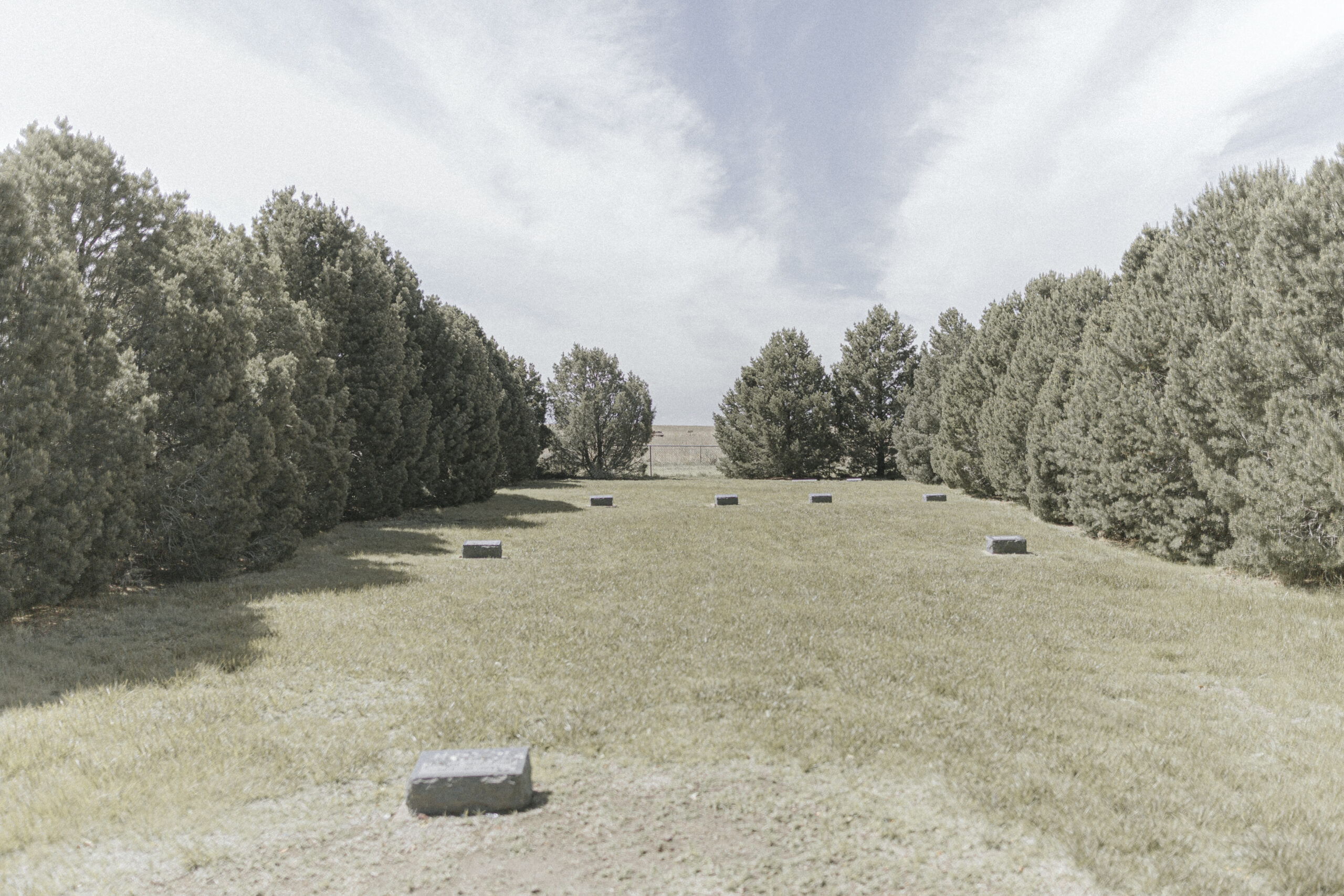
The Amache Cemetery, located in the southwest corner of the Amache site. According to the War Relocation Authority records, 106 deaths occurred at Amache.
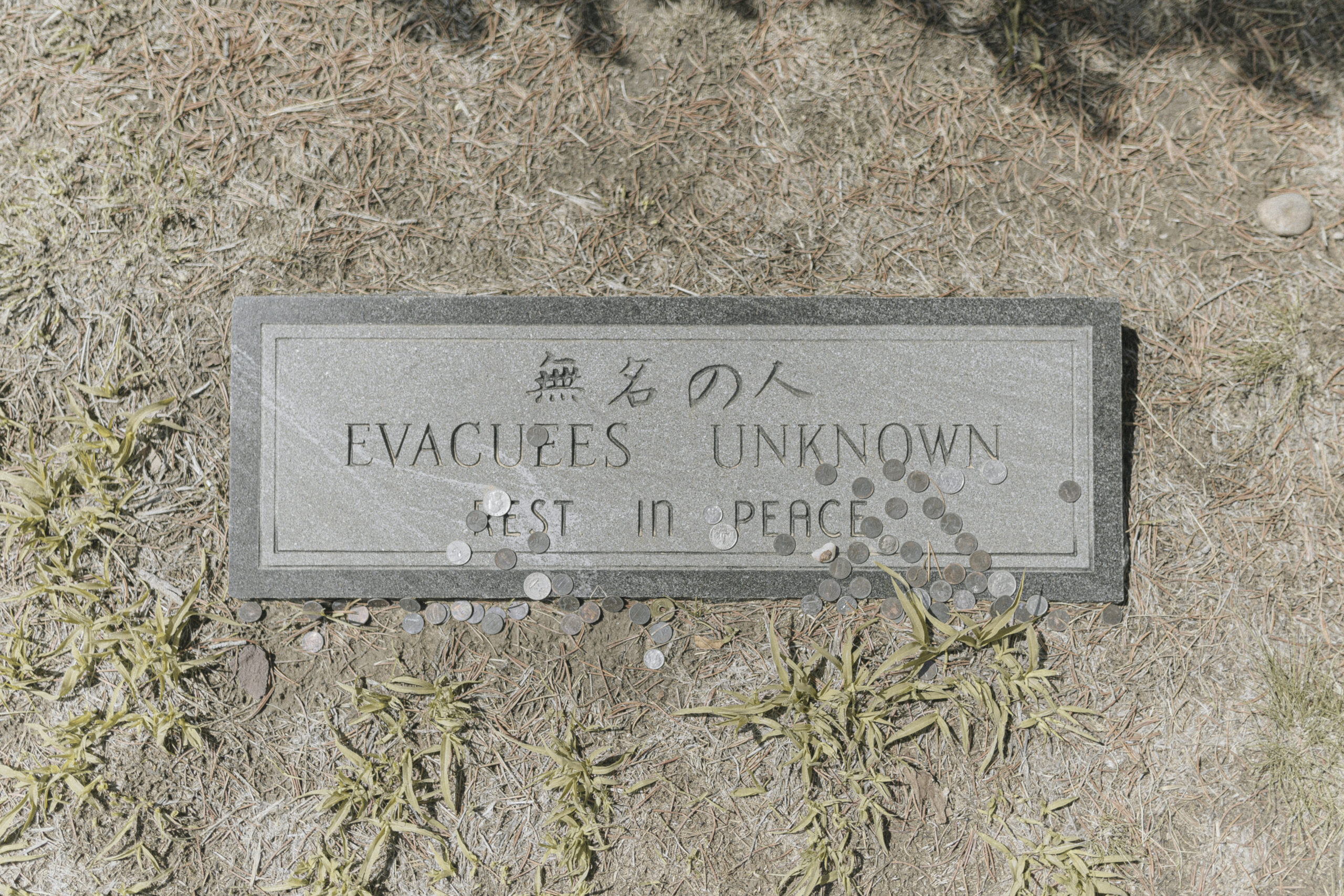
The cemetery includes 11 grave plots, ten with markers and one without. The unmarked grave plot is dedicated to incarcerees whose names are unknown.
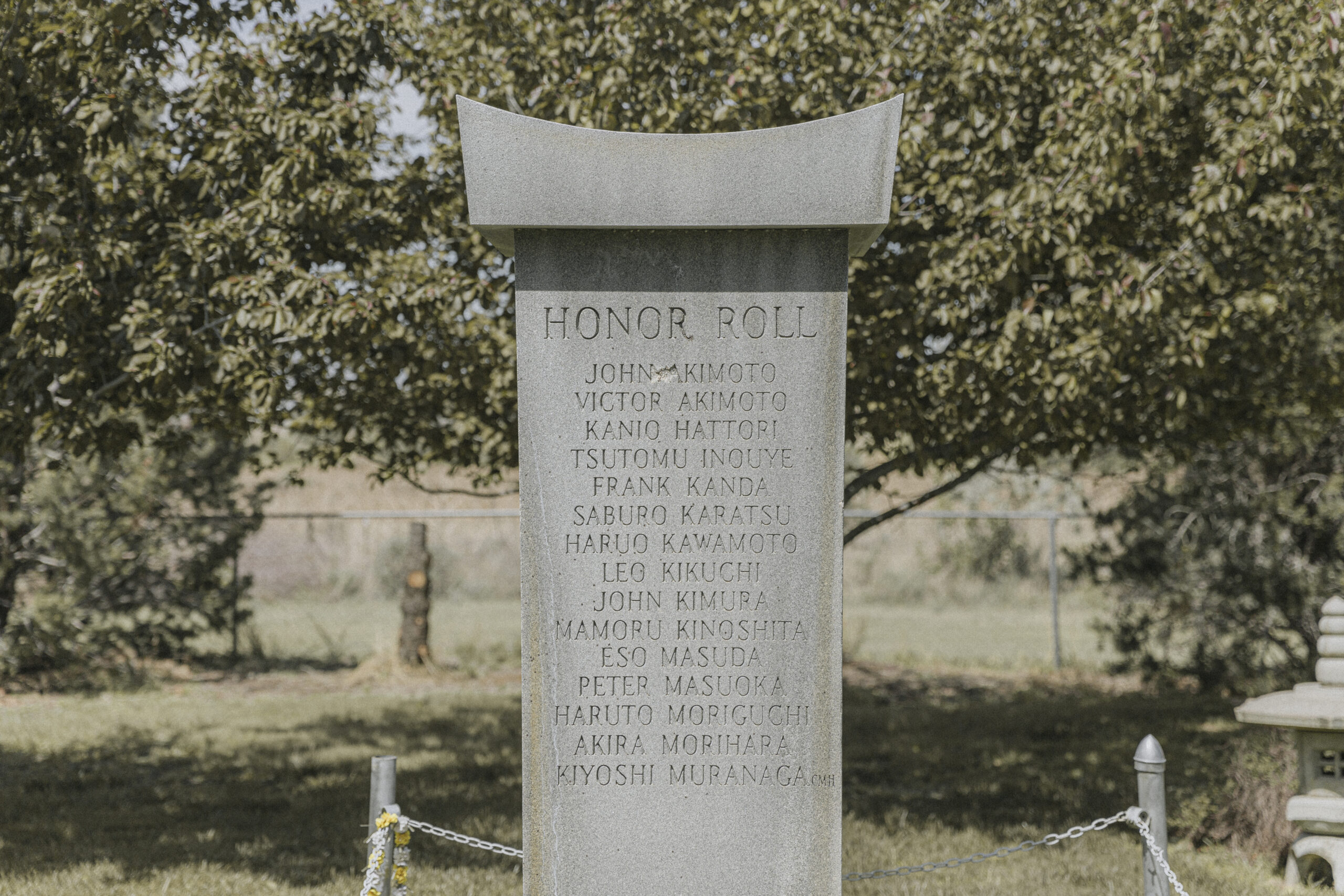
Amache had the highest rate of volunteerism of all the camps, with 953 men and women volunteering or being drafted for military service during World War II. Of these, 105 were wounded and 31 were killed in action.
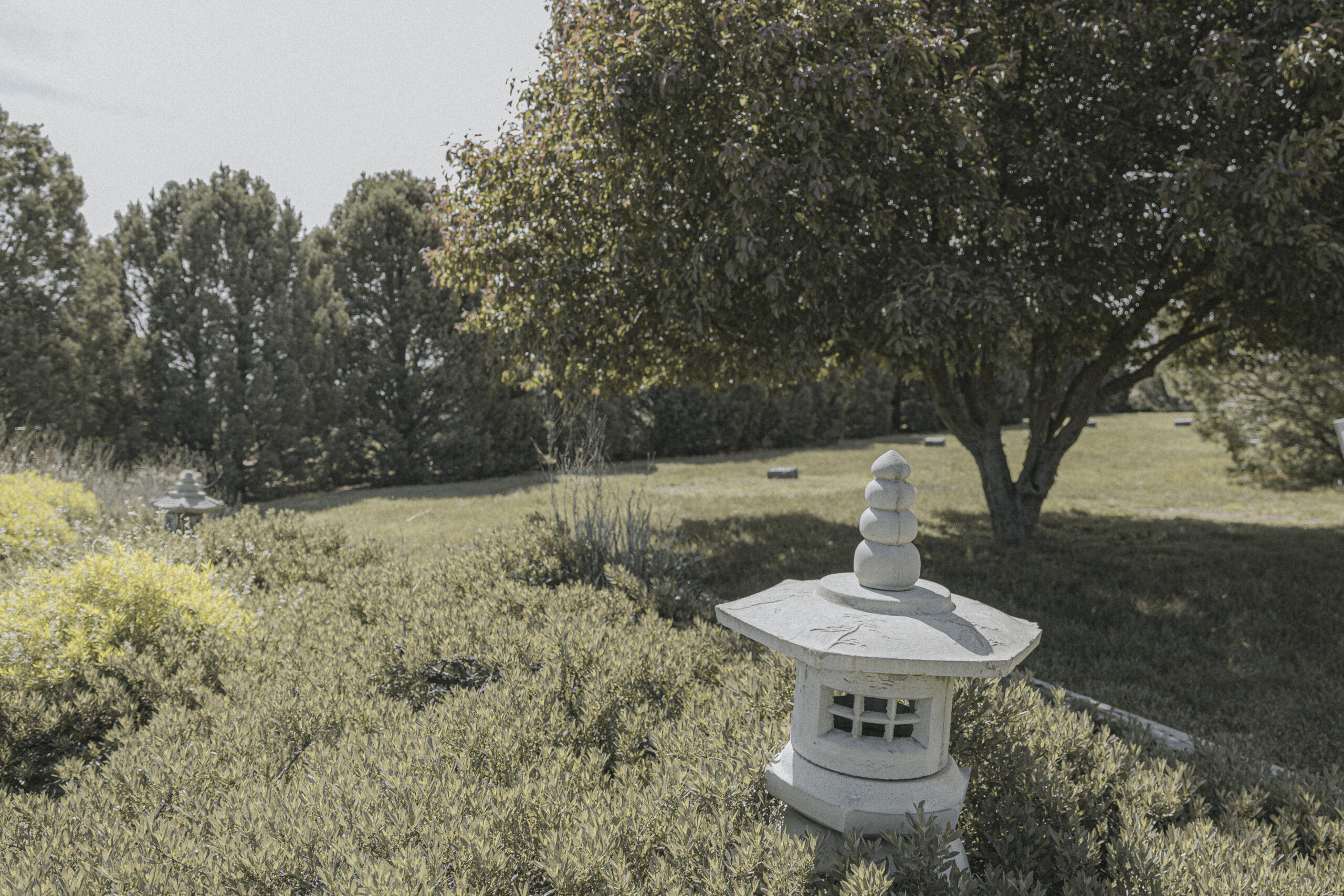
With the help of local students from Granada and the Amache Preservation Society, what used to be a smattering of headstones bordered by cattle-guard was transformed into a lush cemetery lined with pine trees and Japanese toro lanterns.
In 2022, President Joe Biden signed the Amache National Historic Site Act, officially designating Amache as a National Historic Site under the National Park Service.
Why is Amache significant?
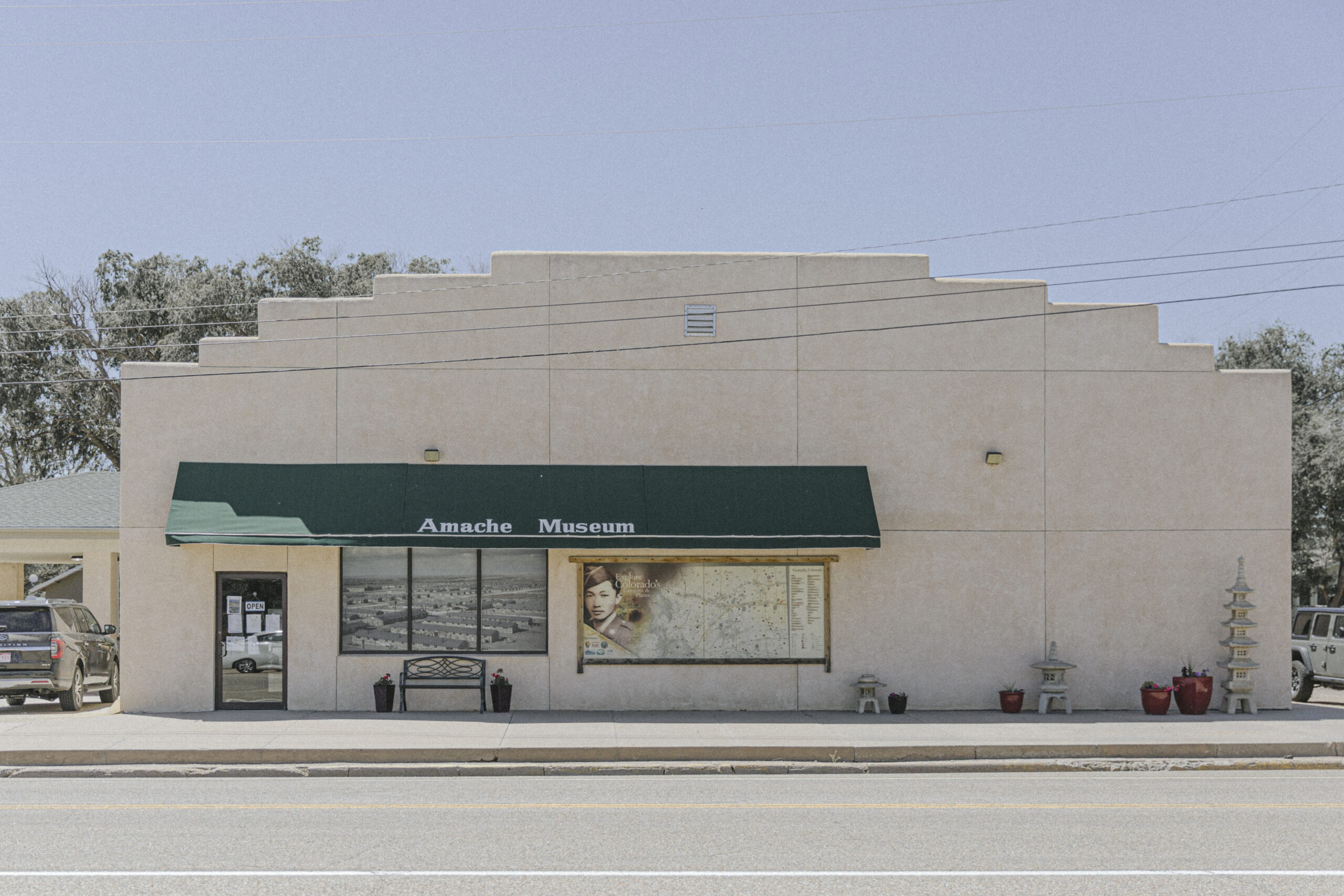
Located in downtown Granada, the Amache Museum is staffed by Granada High School students who volunteer with the Amache Preservation Society.
While Amache is now a National Historic Site under the National Park Service, much of its ongoing care and preservation remains a community-driven effort, led by the Amache Preservation Society (A.P.S.). Founded in 1993 by Granada High School teacher John Hopper, A.P.S. is made up of student volunteers who are committed to maintaining the site, educating the public, and ensuring Amache’s history is not forgotten.
What began as a classroom history assignment quickly evolved into an organized movement to restore the long-neglected site. Though met with initial resistance from some local residents—many of whom worried about federal oversight and potential land-use restrictions—support for A.P.S. grew over time. By the early 2000s, community engagement had increased significantly, with hundreds of volunteers joining A.P.S. students to rehabilitate the Amache cemetery, plant trees, and improve the site’s landscape.
Beyond preservation, A.P.S. has also worked to expand public awareness of Amache’s history. The group runs a local museum in Granada, curating artifacts, photographs, and documents related to the camp. A.P.S. students have also had the opportunity to participate in archaeological digs, collaborate with historians, and even travel to Japan to deepen their understanding of Japanese culture while sharing Amache’s story internationally. The success of A.P.S. highlights the power of education and community partnerships in historical preservation.
Please note: These photographs were taken with permission and permits where required, in accordance with site guidelines. Visitors must respect and follow all visitation protocols.
This historical overview is informed by research from the Densho Encyclopedia (accessed in 2024), National Park Service (accessed in 2024), and interviews conducted during a visit to the camp in 2024.
